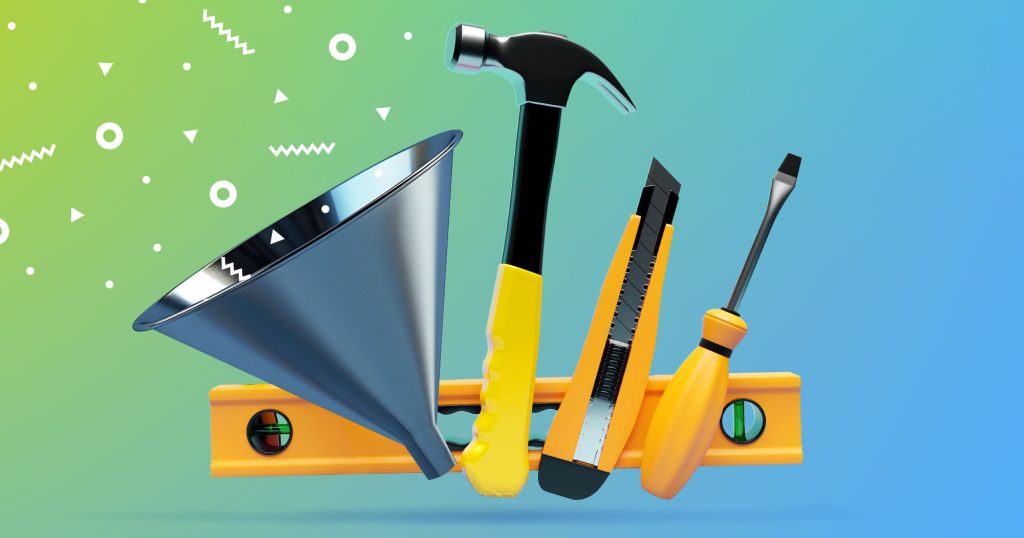You can watch/listen to this panel discussion as well as the full conference following the link above, but in case you prefer written content — here’s a transcript for you to scan through.
Enjoy!
What does your most successful cold outreach sequence look like in terms of structure, the number of touch points, your favorite channels, and messaging tactics?
Mark: My typical cold outreach really depends on the total addressable market that I’m trying to reach out to and also the deal size. That determines what channels and how detailed I’d need to go with my messaging. My sweet spot, though, is really combining email and LinkedIn. I’m not necessarily saying that the phone doesn’t work or cold calling is dead, that’s not my argument at all. It’s just that I get pretty good results with my email and LinkedIn approach. And there are times when I do add in phone calls if I’m not getting the results that I expect with cold emails.
But in terms of the sequence design, typically it’s around ten steps. Those steps include between five to six emails and three to four LinkedIn touchpoints as well. So a touch point might be to view the profile, send a connection, send a message, or if they connect or engage with some content. That all happens over 21 days.
And then, just to talk a little bit more about the copy of the messaging, it’s very specific to the problems or challenges that the prospects I’m reaching out to will face.
That way, through the right segmentation and list building, I can send a one-to-many message to the same persona about a specific challenge. And with every sequence, I always pick two problems, and I split those two problems across four or five emails.
Edd: As an agency, we have to adapt to many different types of workflows. Typically, we do have an automated set of emails with about six to eight steps going out and we usually have four to six LinkedIn touches that are sprinkled in between to complement the emails. Among those steps, we also have calls because, even though it’s not Mark’s preferred way, it does yield results.
These are all depending on the industry, the total addressable market, the client, and what their specific needs are, because we personalize these campaigns. Now our messaging style, again, we’re quite flexible in our writing. We have different writing styles. I actually have a library of about 21 different writing styles for sales and marketing that just give a base to jump off of.
But then the real power comes from the research. Our team really invests a lot of time when we’re onboarding a new client on research, in-depth research, and that’s to address what Mark said, what’s the real pain?
People generally just won’t pick up an email because there’s features and benefits, more so it’s personalized for their own personal pain or what their struggle is. And so we try to really hone in on that over several messages, phone calls, etc.
Nick: I don’t need to go over what Mark and Ed just talked about because I think they covered it pretty well. But the way that I think about this stuff, especially with the volume that has exploded over the recent years, more specifically because of AI accelerating, is you have to think about your sequences or your workflows as separate mousetraps.
A salesperson that’s assigned to a lead is going to have their own mousetrap, which is going to be 6-8-10 touches. The marketing team, the company is going to have its own mousetraps based on what the prospect does or what lists they get into.
So you have to think of the whole field and think about what’s out there, put that into context, and then put yourself in the prospect’s shoes. What are they going to respond to, what are they going to be most interested in? And also, what is not going to annoy them, because you have a higher level of annoyance that people have because of just the sheer volume of outreach.
So you have to really put that at the top of mind. I don’t think about these as a long, ongoing campaign. I think of them as short bursts around a specific topic or a specific need that you’re trying to address, or a specific message that you’re trying to send out there. And then if you don’t get a response, you put them to the side for a little while and then pick it back up again with some other campaign or some other thing.
Whether it’s a specific rep or an overall team doing this, you kind of think about it the same way. So I just look at it as a short burst than how I did maybe five, seven years ago, where it was just one rep sending many touch points over a long period of time, like many months. I don’t think you could do that anymore. You’ve got to keep these things for six to eight weeks and then wrap it up and send them into something else.
What are the tactics that you employ in order to achieve that balance between maintaining the highest quality of outreach, which is typically manual, and scale, considering we also have to do that for, let’s say, 3000 people per month?
Mark: Before I answer this question, I always like to speak to my clients and teach them that you can’t sell car insurance to somebody who doesn’t own a car. And where I’m going with this is that you need to make sure that your message is relevant. If your message isn’t relevant to the prospect you’re reaching out to, then you’re not going to get a reply.
Adding in a line of personalization and then following that up with a non-relevant message — you’re not going to get a reply. So with all of the campaigns that I work on, I actually don’t focus on any sort of intro personalized message at all, or AI-generated message. If there’s an observation that I can find for a trigger, which Vlad was sharing in the previous talk, then I’ll start with the observation.
But if I can’t find an observation, saying that, oh, I noticed that you went to this university, or hey, you’re human, you must breathe oxygen now buy my stuff, which is what a lot of those lines come across as. So for me, it’s really focusing on making sure that you do your research and your list building. And as Edd mentioned, that’s a huge part of the process, which I’m sure Edd’s customers or clients don’t realize of all the work that goes into the research side of things before a campaign can go out.
But focusing on much smaller segments and lists of prospects that share a similar or common trigger or signal, and then messaging with a highly relevant message which has nothing to do with their individual personality or what you can find on LinkedIn can still get results. I typically see 13% to 17% replies.
Some of those replies are a no or a maybe or not right now, but I’m still getting those replies, which is helping from a deliverability point of view too.
Nick: With all the automation tools, it’s very hard to stand out on LinkedIn, and so I just try to keep it as manual and genuine as I can. And the way I think I found that this works best is by showing up, responding, liking, or commenting in your target’s feed, and things like that. So if somebody that you’re targeting at a company gets promoted, you can maybe automate the alerts for that, not necessarily the outreach. So automate the alerts through the different tools that are out there about somebody having a job change or they posted something or something like that, and use that as a trigger point to go and reach out to them and say, hey, congratulations, or hey, that’s great news, and just to keep it top of mind.
So then when you do want to send that message, or they decide that they have the demand, you’re top of mind because you are commenting on something they care about, which is the content that they are putting out. So that’s what I would focus on.
As a quick tip with LinkedIn, separately from all the playbooks and things that people run, is really just use it truly for what it was meant to be, which is a social network, and be social with people and be active and use that as a way to get your profile out there to increase the likelihood that somebody will respond.
![The Multichannel Success Formula: Top Channels, Sequence Flows, and Messaging Tips [Webinar Transcript] The Multichannel Success Formula: Top Channels, Sequence Flows, and Messaging Tips [Webinar Transcript]](https://reply.io/wp-content/uploads/Webinar-Transcript-1080x567.jpg)




![Upselling and Cross-selling: The Go-To Guide [+7-Step Framework Inside] Upselling and Cross-selling: The Go-To Guide [+7-Step Framework Inside]](https://reply.io/wp-content/uploads/upsale-1024x538.jpg)
